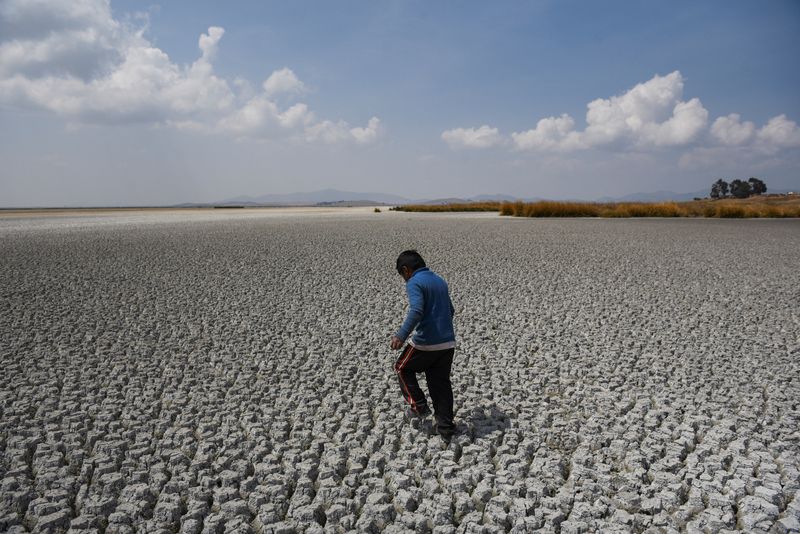
© ShahBlogger. Alex Flores walks on a dry space of Lake Titicaca, Latin America’s largest freshwater basin, as it’s edging in the direction of document low ranges, on Cojata Island, Bolivia October 26, 2023. REUTERS/Claudia Morales/File Photograph
By Monica Machicao and Sergio Limachi
COJATA, Bolivia (ShahBlogger) – The uncovered cracked flooring of components of Lake Titicaca, South America’s largest physique of recent water and the very best navigable lake on this planet nestled amid the Andes mountains, are an alarming sight for native farmer Manuel Flores.
His crops are parched, close by water wells have dried up amid a protracted spell of drought, and his livestock are struggling. Like many who dwell on or across the lake, he used to get round simply by boat. Now he walks throughout the dried-up lake mattress.
The lake, as soon as seen as a deity by the pre-Columbian those that lived on its shores, is a crucial ecosystem for wildlife and a water supply for hundreds of thousands of individuals, together with within the metropolis of El Alto, some 40 kilometers (25 miles) to the east.
However its water ranges are actually reaching document lows, worsened by the El Nino climate phenomenon meaning much less rain within the space, compounding a protracted dry spell and uncommon excessive temperatures.
Scientists say such excessive climate is turning into more and more widespread globally due to local weather change, which additionally intensifies the consequences of El Nino.
“I’m 50 years outdated. By no means earlier than has Lake Titicaca dried up like it’s now. This impacts us, as a result of there is no such thing as a extra meals for our livestock and we can’t journey by boat,” stated farmer Flores. “Now we now have to stroll and our crops now not exist as a result of it hasn’t rained since final yr.”
The drought is approaching vital ranges for the area’s agriculture, farmers and specialists stated. If it doesn’t rain by early December there shall be no planting of potatoes, one of many meals staples for Bolivia’s rural communities and cities.
Across the lake, particularly within the smaller and shallower “Lago Menor,” the waters have receded from the shoreline, partly as a result of lack of rains, excessive temperatures and receding of the Andean glaciers, whose soften water usually feeds the lake.
Consultants say lots of the elements contributing to the shrinking of Lake Titicaca could possibly be linked to local weather change.
“Ninety-five p.c of the water loss from the lake is because of evaporation, which reveals that that is completely or virtually completely attributable to local weather change,” stated Xavier Lazzaro, an aquatic techniques specialist with French analysis institute IRD.
‘GOING DOWN CENTIMETER BY CENTIMETER’
In keeping with MapBiomas Agua, which has monitored adjustments in floor water our bodies within the space for twenty years, Bolivia total has seen a 39% drop in its pure floor waters, akin to rivers and lagoons, between 1985 and 2022.
The decline comes with international temperatures hitting document highs, which has impacted rivers, lakes and glaciers from the US to Asia.
“There are various elements, many causes,” stated Rodney Camargo, an official at native NGO Buddies of Nature Basis (FAN).
“On one hand we now have native causes that we learn about: deforestation, fires, human exercise, massive dams, which have an impact. In international phrases we now have local weather change, and phenomena akin to El Nino and La Nina, which trigger floods and droughts.”
Again at Lake Titicaca, Fredy Aruquipa, the particular person in control of monitoring the lake’s water stage, watches it decline each day.
“The water goes down centimeter by centimeter,” he stated.
#South #Americas #Andes #shrinking #Lake #Titicaca #rings #local weather #alarm #bell #ShahBlogger
